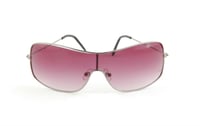
5 steps to reduce cognitive bias on your sales team, according to an expert
Cognitive bias leads to poor decision making. On a sales team, it can kill deals by causing salespeople and their managers to make bad assumptions, take the wrong actions, and interact with customers in ineffective ways.
I spoke with Carey Morewedge on my show, Stop Killing Deals, to learn more about how cognitive bias affects us, and how we can prevent it from destroying our sales. Morewedge is a Professor of Marketing and a distinguished faculty scholar at Boston University, specializing in decision making, consumer behavior, and social psychology.
His teams have spent years studying cognitive bias with hundreds of volunteers, uncovering its roots and developing new ways to reduce its negative impacts on decision making. Here’s what I learned about how to reduce cognitive bias to improve sales.
What is cognitive bias, according to the experts?
If you google “cognitive bias,” you’ll uncover a large number of definitions. You might even encounter the definitions I’ve offered in previous blog posts. But I found Morewedge’s definition to be compelling and helpful.
He explained that there are two primary factors that can lead to bad decision making in humans: Bias, and noise.
Noise is the effect that uncertainty and environmental factors have on our decisions. For instance, he says, we often know what kind of weather we might expect in the coming week, but there are many variables we can’t be certain of. If we’re making a decision about an outdoor event or other activity, the lack of certainty about the weather is a type of “noise.” Other types of noise can be the fact of being overly busy, multitasking, distracting sounds in the environment, or anything else that we can’t really control and that impacts our ability to think clearly and make a careful choice.
Bias, on the other hand, is a systematic error in thinking that leads to a wrong decision.
“We can reduce noise,” says Morewedge, “by controlling our environment. But bias is harder because it makes our judgments and decisions systematically wrong.”
Cognitive biases come to exist because humans use a series of heuristics in order to function in a complex environment. Heuristics are a type of cognitive shortcut that allow us to make judgments without knowing every single detail about a situation.
For instance, when buying a used car, we can get a fairly good idea that the vehicle has been well cared for by reviewing service records and noting the general cleanliness and good condition of the vehicle. These are reasonably reliable when used together, and are preferable - not to mention more realistic - than going back in history and watching every interaction the previous owners had with their vehicle.
However, heuristics can go wrong. For instance, a vehicle that was previously wrecked and then repaired, and that has been carefully detailed prior to being offered for sale may seem nicer than the one next to it that hasn’t been washed or vacuumed, but whose previous owners meticulously cared for it and that has never been in an accident.
Morewedge gave another interesting example based on research conducted by academics. In this example, consumers were offered several wines to taste. The average consumer, when told the price of the wines, selected the most expensive wines as their preference. The same average consumers, when not told the price of wines, tended to choose the cheapest wines as their preference.
This is an example of a heuristic that is not a reliable measurement for judgment - that is, choosing a “good” wine by its price tag.
Short video clip about the confirmation bias at play when selecting wine.
When our heuristics are part of our system for decision making, and when they have a tendency to lead us astray, they become cognitive bias - a systematic error in thinking.
How cognitive bias affects sales
Morewedge talked about a famous example of cognitive bias leading to tragedy. When the spaceship Challenger was launched, there was a problem with the o-rings that led it to explode during launch, killing the crew.
This happened because the data that was available to the NASA team was ambiguous, and they were under pressure to launch. Because of the pressure to launch, cognitive bias led them to interpret the data in the most favorable light, and thus moved forward when they shouldn’t have.
This is an example of confirmation bias, which Morewedge calls “the mother of all biases.” There are thousands of examples of cognitive bias that have been identified and researched, but this one is at the root of all of them.
Confirmation bias occurs when, for whatever reason, we prefer or believe in a particular theory or idea. Our minds then seek out and interpret data to confirm our bias, rather than to challenge it.
In sales, this and other biases can have negative impacts when we make assumptions about what our buyers need, how they make decisions, how invested they are in the purchase, and what they need in order to make the decision.
It also impacts buyers, who may not make the best possible decision for themselves.
I’ve covered cognitive bias in sales extensively in previous entries. For more detail and specifics, check out:
- How to harness cognitive bias to win more sales
- Why you need to understand cognitive bias in sales
- The cognitive bias that’s making you and your team cocky
- How the bandwagon effect impacts sales
- How the anecdotal fallacy impacts sales
- Why your buyers are focusing on the wrong things
- How to win more sales with the Ikea Effect
As you can see from these articles, unrecognized cognitive bias is pervasive and destructive throughout the sales cycle, from the customer to the salesperson to the managers to the leadership team.
How do we stop cognitive bias from destroying our sales?
Fortunately, cognitive bias can be harnessed and tamed. Morewedge says that researchers have known since 1982 about four key tools for combating cognitive bias. His team has added a fifth through their research.
- Learn about cognitive biases
Researchers have found that subjects who are educated about cognitive biases make better decisions in trials. This has also been tested in the field. - Learn about the “directionality” of bias
For instance, the “directionality” of cognitive bias is “toward” something we already think or believe. This means that we will tend to make decisions that confirm what we already think or believe. So in order to correct for it, we must take measures to balance the other direction. - Get feedback on our decisions
Reviewing actions in the past and their impact and outcomes can help us adjust our decision-making in the future, with less bias. Analytics within a tool like Membrain are important for sales teams to overcome their biases regarding their behavior and activities, so that they can learn more effective sales approaches, for instance. - Coach and train
Individuals who receive coaching to combat their cognitive biases perform better on decision-making tasks. This highlights for me the importance of sales coaches being informed and knowledgeable about cognitive biases, and spending time with their teams coaching them to compensate for them. - Watch others making decisions
This fifth approach is the one that Morewedge’s team added to the list through their research. They found that people learn to compensate for biases simply by watching other people make good and bad decisions. When those same people were previously educated about cognitive biases, and then allowed to watch people making decisions, they became better decision makers.
This latter step is an interesting case for using video content and group role playing to help salespeople learn to combat their cognitive biases and make better decisions during the sales process.
I believe that cognitive bias is an important factor in sales that still has a great deal to teach us. I’d love for you to watch the full interview with Morewedge here, or to explore our full library of cognitive bias articles by clicking on the links in the list above.
When have you seen your team affected by cognitive bias? And what was the outcome? Share your stories with us!

By George Brontén
George is the founder & CEO of Membrain, the Sales Enablement CRM that makes it easy to execute your sales strategy. A life-long entrepreneur with 20 years of experience in the software space and a passion for sales and marketing. With the life motto "Don't settle for mainstream", he is always looking for new ways to achieve improved business results using innovative software, skills, and processes. George is also the author of the book Stop Killing Deals and the host of the Stop Killing Deals webinar and podcast series.
Find out more about George Brontén on LinkedIn







